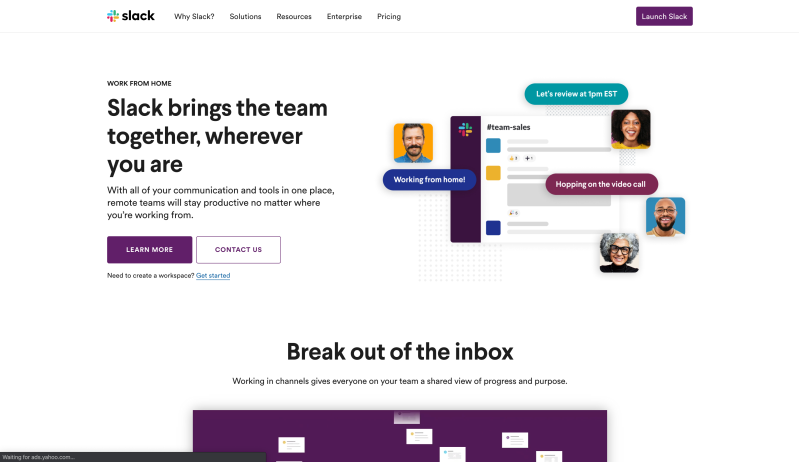User Feedback: The Tools, Questions, and Examples You Should Know About

Every successful product needs users.
Every successful product needs customers, as well. Often, the names ‘customer’ and ‘user’ are switched in and out interchangeably. However, in the world of product management, these two are not always the same. The customer isn’t always the one using your product and the user isn’t always the one paying, especially when it comes to enterprise product design.
In these situations, gathering customer feedback may not be as effective as you’d hope — you could ask the gatekeepers and decision-makers what they think of your product, but if they aren’t the ones using it day in and day out, then their input might not be all that valuable.
Instead, it’s better to try and gather feedback from those using the product: your users.
How to gather user feedback
The good news is that it can be far easier to gather user feedback than customer feedback.
As the user is frequenting your product, there are many opportunities to gather feedback both directly and indirectly. General product usage will generate indirect feedback allowing you to see how people are using your product (in the shape of usage analytics etc). This indirect feedback can only tell you so much — as it cannot capture the thoughts and feelings of a user as they experience your product.
Gathering user feedback requires a different approach than customer feedback. Customers may leave reviews on social media or a third-party review site. You can also send out follow-up surveys to gather further information. This can all be collated by CRM software to give valuable insights, but more often than not these reviews reflect short-term usage or offer a view of the purchasing experience and not the product experience, which is what you’re after.
By gathering user feedback, rather than customer feedback, you can get a much better picture of how people feel using your product. They have far more experience with the product than customers and can give you a more in-depth and reliable response.
Gathering user feedback can be simple, with a range of ways to obtain it.
Here are just a handful of user feedback tools and examples to get you started.

User feedback tools for enterprise products
Project management tools
You would be hard pushed to find a business that doesn’t use some form of project management tool. For enterprise product management teams, their project management tool of choice will be something like Jira or ClickUp.
No matter which software you choose, project management tools have tasks, cards, boards, and columns that you can use for collecting internal user feedback. This allows users to give feedback in the moment, rather than jotting it down elsewhere to be submitted eventually or forgotten about. It also gives valuable context to the feedback, helping to identify extremely specific situations.
There are of course some downsides to collecting feedback through project management tools. It can be difficult to gather feedback in a way that adds genuine value. Merging and categorizing feedback needs to be done manually and often the feedback is hidden behind cards. So while the feedback itself has value, the amount of time and effort involved in collecting it can often be too intensive.
Team messaging tools
When building internal products, gathering feedback is just a Slack message away. Every business uses some form of team messaging tool, no matter if it’s Slack, Microsoft Teams or Skype. These are great tools for communication — and that includes user feedback.
Say you need a way for team members to quickly and easily submit feedback as soon as it pops into their head, you can set up a dedicated Slack channel to handle all product feedback. This means internal product feedback is all in one place ready to feed into your CRM.

Email is the classic way to obtain user feedback within the enterprise realm. We use emails every day for work (sometimes even at the weekend) and that makes it a perfect tool for exchanging user feedback.
The second a user has an idea for a new improvement or feature, they can quickly send an email to the product manager or dedicated feedback address. The feedback can be organized in your CRM or now, next, later roadmap and used to guide decision-making in the future.
There’s just one caveat to consider here — we all use email a lot. Some inboxes see hundreds of emails coming in every day, and this can cause problems when it comes to gathering user feedback. For the user, there’s a sense of “Do I really want to add more emails to my to-do list?”. And for product managers, it can be easy to miss a single email, especially without a stringent filtering system in place.
Having a dedicated software tool for user feedback gathering can avoid any must-know insights slipping through the gaps. Check out airfocus’s feedback management tool and try it for free.
User feedback tools to engage with external users
Knowledge bases/forums
Websites like Zendesk are making it far easier to collect and arrange user feedback with their forum-style customer service platform. These forums are typically used for self-service troubleshooting, basic customer service, and a two-way feedback platform.
It’s cheap, quick, and easy to set up a user feedback forum. They can be structured in a way that groups all types of user feedback allowing for simple navigation. The structured forum also means that specific feedback can be read in context and all feedback relating to specific features is grouped together automatically.
By using a user feedback tool like this, you can cut down on customer service costs by assigning agents to moderate them. This will ensure that the forum is properly maintained and users have someone with the appropriate product knowledge to solve common issues.
Best of all, an internal knowledge base creates a sense of community amongst your users. Many product advocates will frequent the forum to discuss features and even help others solve their issues without the need for a customer service agent.
Social media
Chances are, your users are sitting in pre-built communities on social networks all over the internet. We’re talking Twitter, LinkedIn, GitHub, and so on.
When it comes to user feedback, you should be where your users are — so work out where that is and start your insight hunting. Responding to tweets or even just listening in to how people discuss your product online can open up really valuable research channels.
Dedicated user feedback tools
When your product users sit external to your business, there’s really no limit to how many people your product could reach. That’s great news for MRR, but it can make collecting user feedback an almost insurmountable task.
Rather than having multiple platforms, you can bring all your user feedback activity into a single place. Using a dedicated feedback tool ensures that every piece of user feedback is stored in one central location. This allows you to see internal and user feedback alongside customer feedback to give you a highly detailed full-scale picture.
This kind of software will also close the loop by showing users that you are taking their feedback seriously. With airfocus, it’s easy to generate a roadmap from the user feedback you receive, helping communicate the road ahead to users and show how you’ll address their concerns.
In-person meetings work for both internal and external products
There’s no rule to say you can’t collect user feedback face to face!
If you’re working on internal products, it’s going to be fairly simple to set up a quick discussion with some users on a semi-regular basis. And for external users, speaking with users face to face is a great habit to get in to, to test your UX, explore new ideas, and keep the conversation flowing.
These recurring meetings can be extremely useful for those looking to understand a user’s objectives and why they use your product to achieve them. They can help you identify the challenges users are facing and how important each issue is to them. By holding regular meetings with those using your product you can shape future efforts and keep on adding value.

Benefits of user feedback: why bother establishing user feedback methods?
Imagine for a moment that you’ve baked an apple pie and offered it out to everyone you know. Each person goes away with a slice of pie and enjoys it in their own time. Then, a couple of months later you bake another pie, but no one seems to want a slice.
Because you didn’t ask anyone what they thought of the pie, you have absolutely no idea why everyone’s turning you down this time. Did it not taste right? Was the crust too soft, or the filling too bitter? You simply can’t know — and because of that, you’ve wasted valuable time and resources on a new pie that will now go to waste.
Your product is a bit like that apple pie. When you ask users for their feedback in real-time (or as close to it as possible), you have the opportunity to optimize the recipe and other specifications.
Aside from gathering first-hand feedback from the people using your product, user feedback delivers the following benefits too.
User feedback brings alignment
This is especially true for internal products. Collecting feedback can bring clarity and align everyone to the same goals. This shared understanding with internal stakeholders will help create a stronger, more unified product strategy.
User feedback helps you correct mistakes
You don’t want to get to release day and realize your product is flawed. Gathering user feedback during development will help you identify problems early on so that by launch, you know you have a highly functional product with all the bugs squashed before the reviews start coming in.
After launch, you can also utilize user feedback to improve and optimize the product as your feature set develops.
User feedback gives you a holistic view
Earlier, we talked about customer feedback versus user feedback. But, in fact, collecting customer and user feedback helps give a much more holistic view. Gathering insights about the commercials of your product as well as day-to-day experience can give you a full and clear picture and SMART goals for the future.

User feedback best practices
Before we wrap up, here are a few tips to help you gather more feedback that actually adds value.
Close the feedback loop
User feedback shouldn’t be a one-way street. While many companies talk about “listening to the voice of the customer”, it sometimes doesn’t feel like they are.
There are plenty of ways to gather feedback, from elaborate satisfaction surveys to simple NPS surveys. The problem is that many of these methods have no way of letting the customer or user know that their feedback has been taken on board.
This is why many companies have switched to a forum-style feedback system or other platforms, like airfocus, that allow for two-way communication between developers and users. This is the easiest way to show acknowledgement of feedback and communicate the ways that feedback has been taken on board.
When communicating with users, it’s important to mention how the change will benefit different stakeholders and why they should take note of them. Just like external products offer public release notes, you should be releasing a private alternative that is tailored to different teams.
Be sure to respond directly to those who suggested any changes you have made and offer clear next steps to ensure their issue is fully resolved. This will help improve the relationship even further.
Ensure your product continues to align with company objectives
As valuable as user feedback is, there is a risk that too much will dilute the value the product offers to the business or to the user base as a whole. Incorporating every piece of user feedback may mean the product falls out of alignment with company objectives and/or your strategic vision.
This is especially important for internal products, which should remain tight to the overall company objectives.
Keep treating users like customers
While enterprise users aren’t always the ones signing on the dotted lines and accepting your commercial terms, they still have a lot of sway when it comes to how much money your product will make.
Users will be the ones who’ll convince the buyers to upgrade to a higher tier or pay for bolt-on benefits. And when the buyers want to make sure they are getting value for money, it’s the users that they’ll ask.
What we’re saying is, don’t lose sight of how important your user satisfaction is when users and customers are separate.
To learn more about the value of customer feedback, be sure to download our free eBook, “How To Use Customer Feedback for Business Growth”. Between the (digital) pages, you’ll find a comprehensive look into all the core topics of customer feedback — a must-read for any product manager.

Tomas Prochazka

Read also



All product feedback in one place

Experience the new way of doing product management




